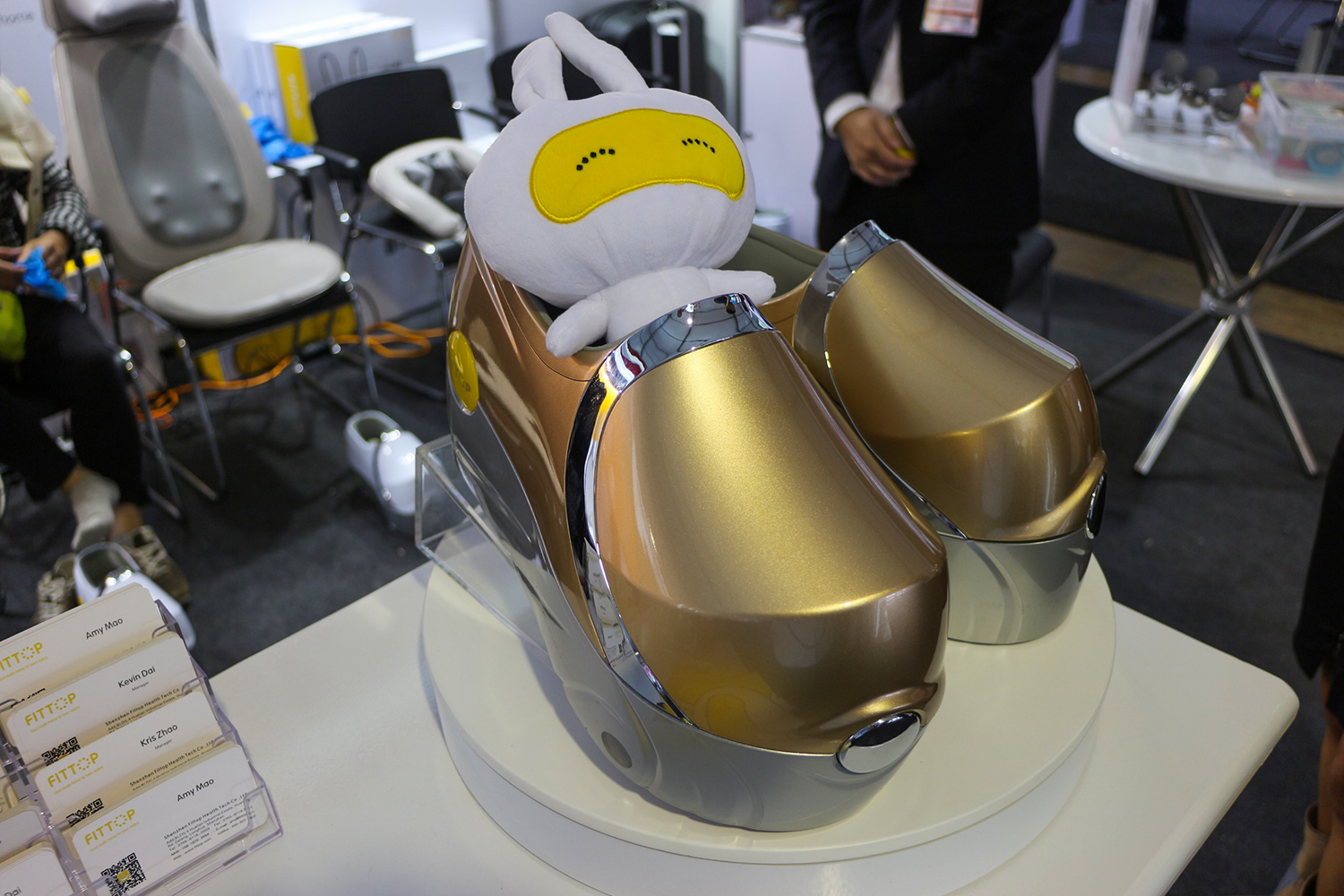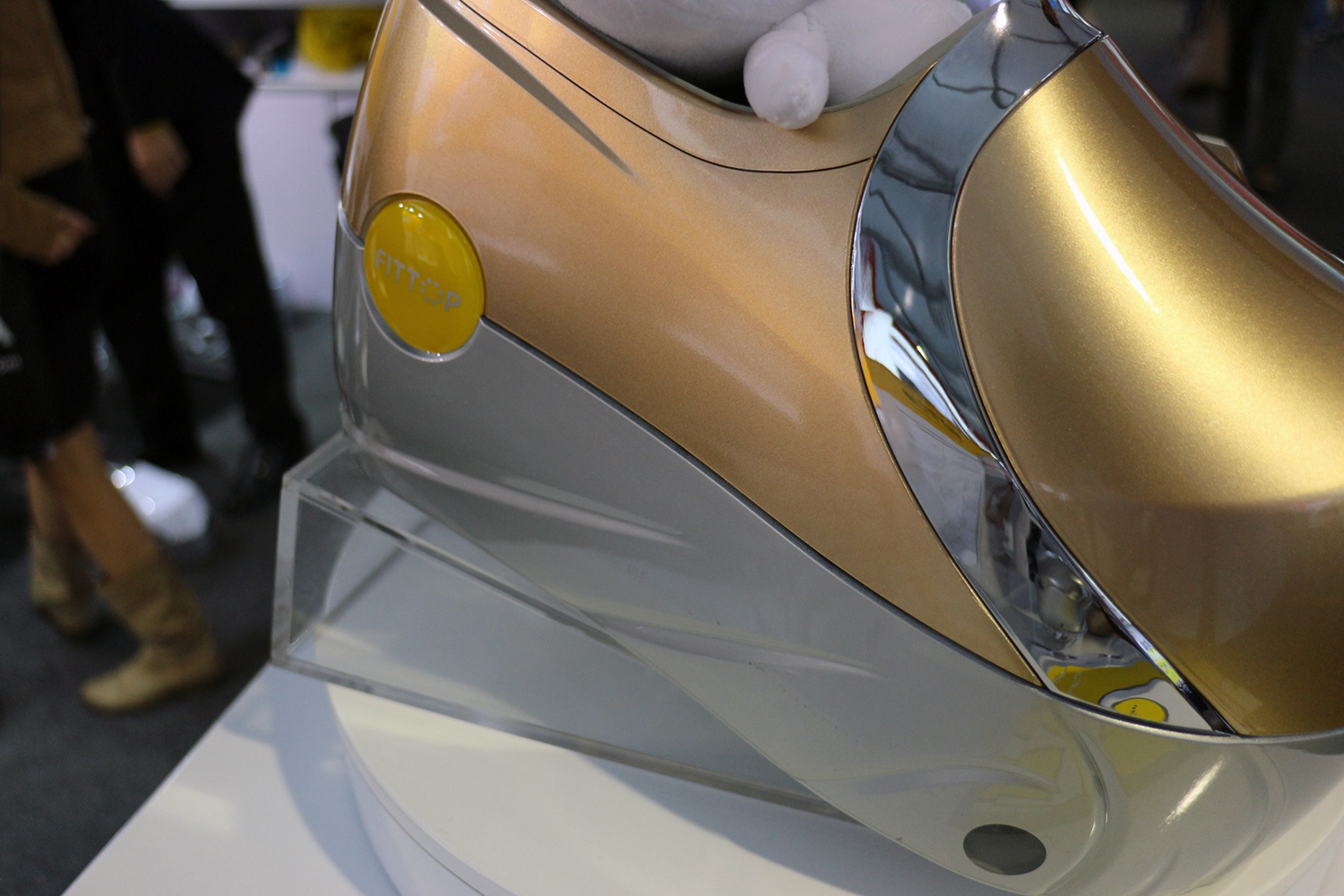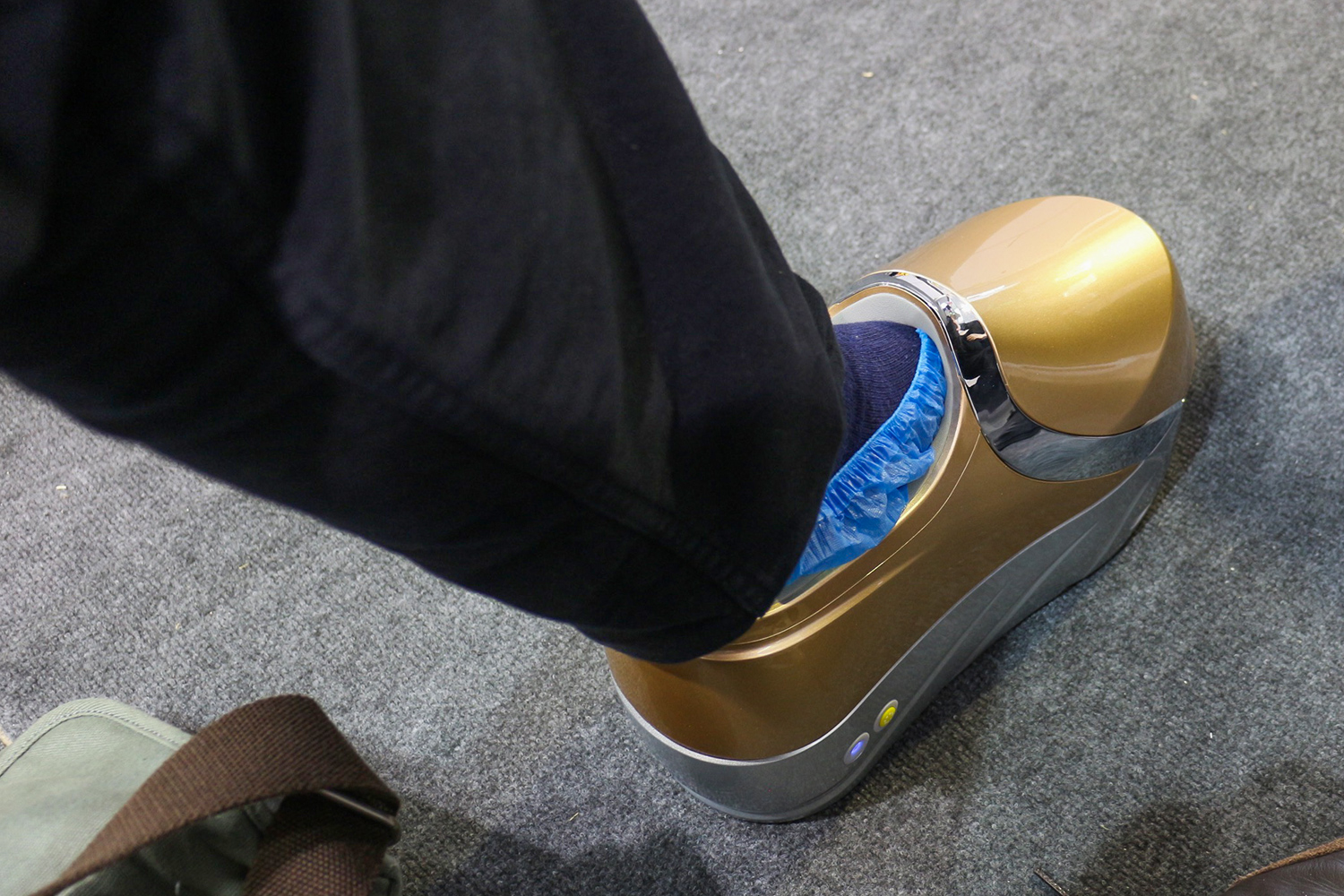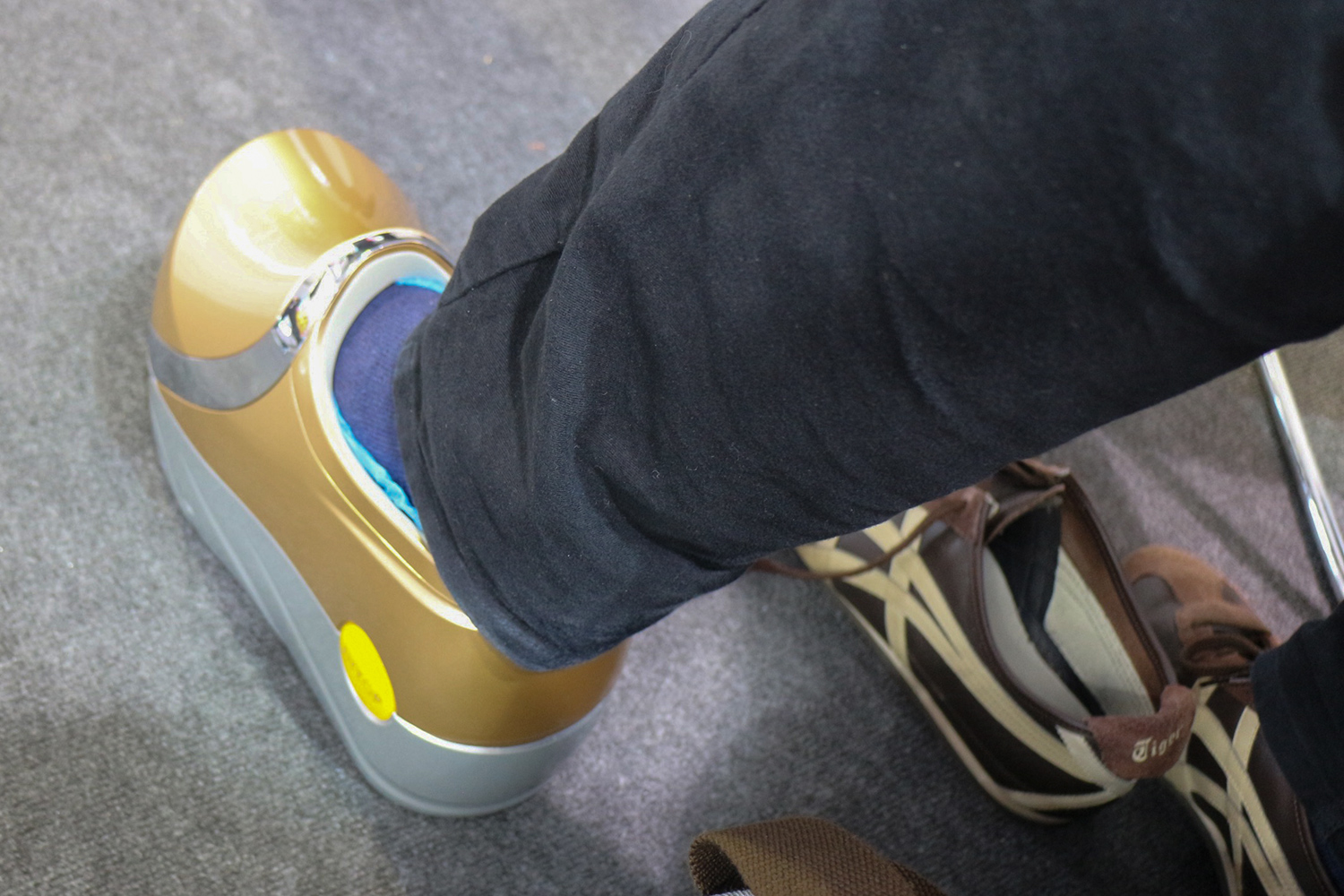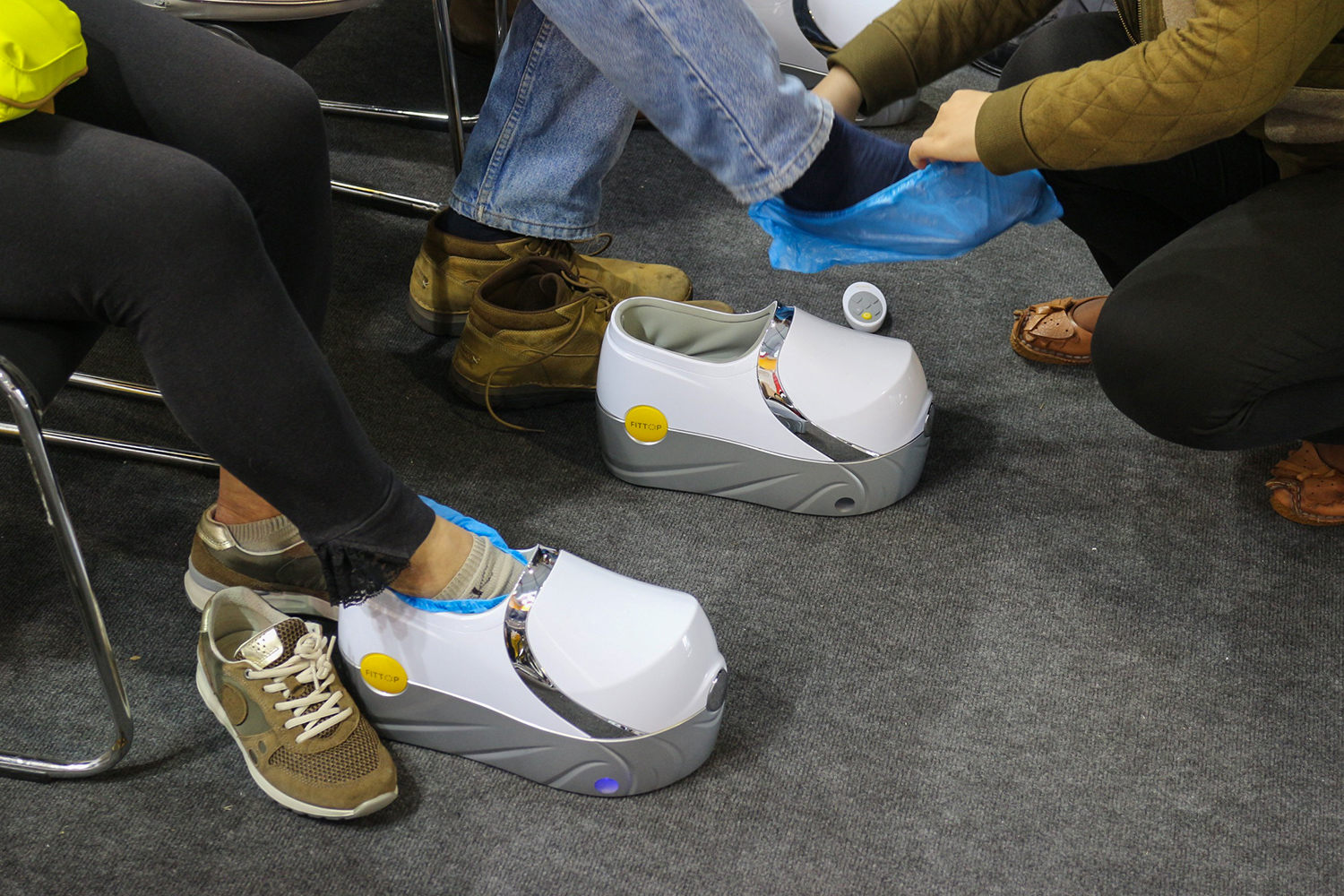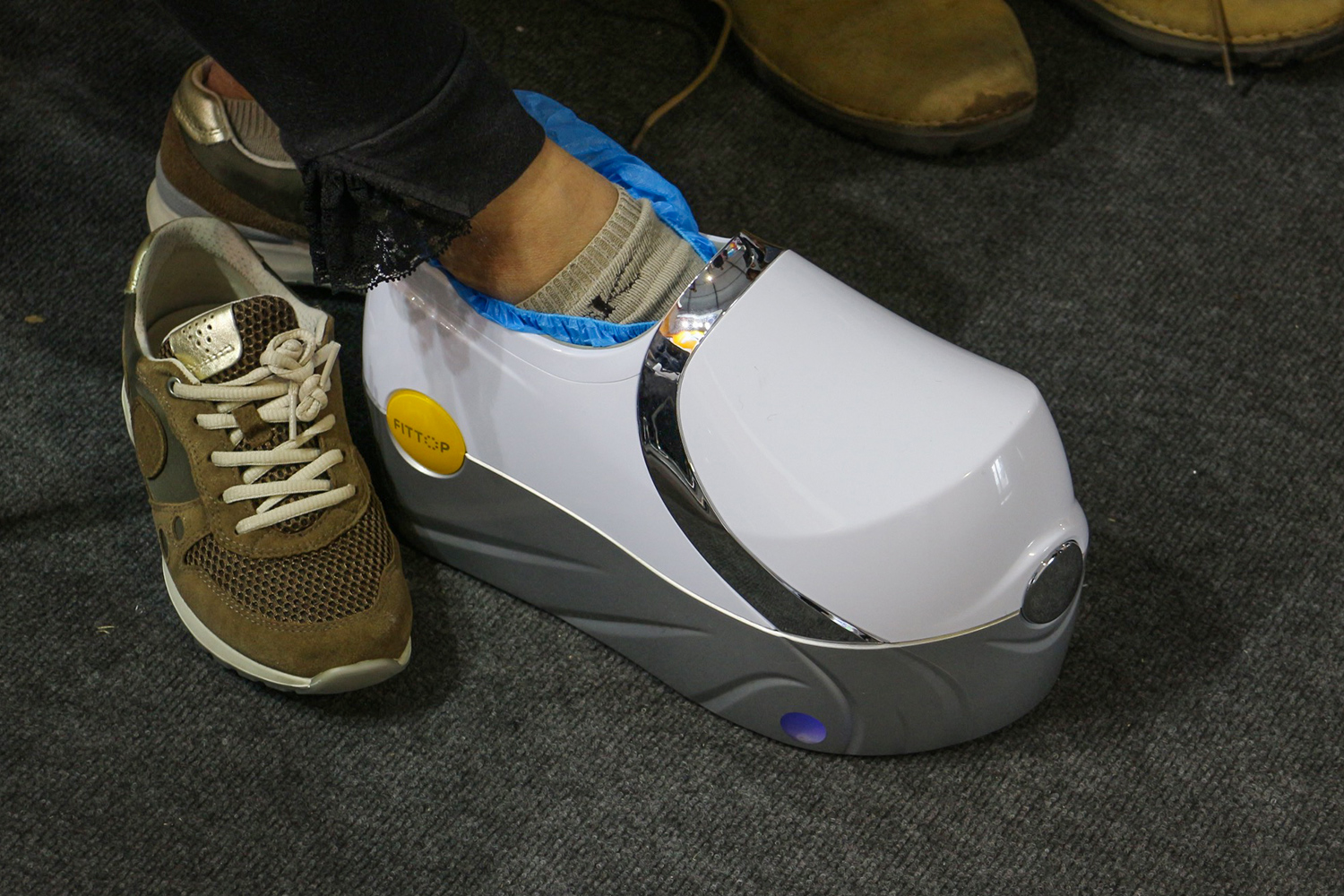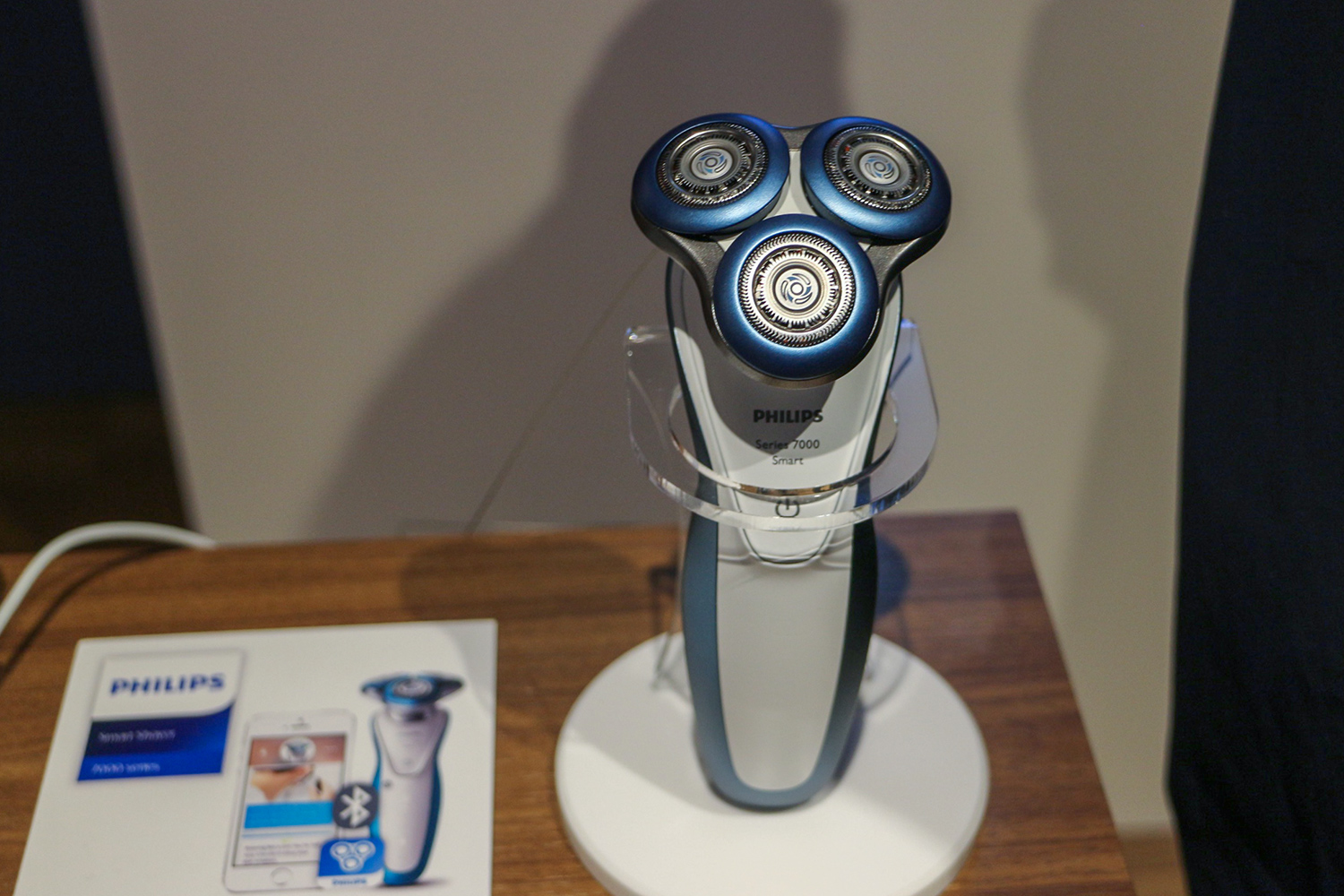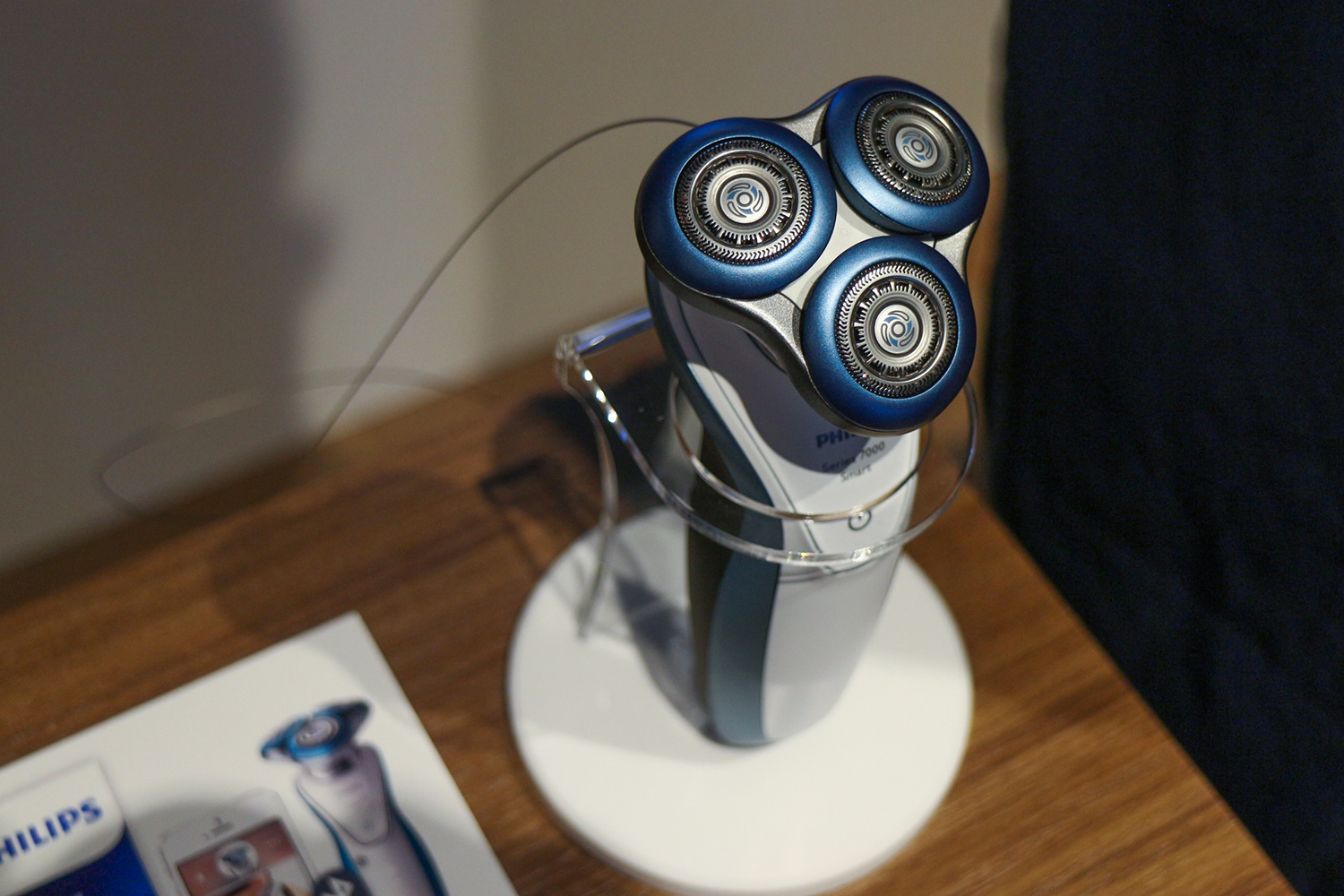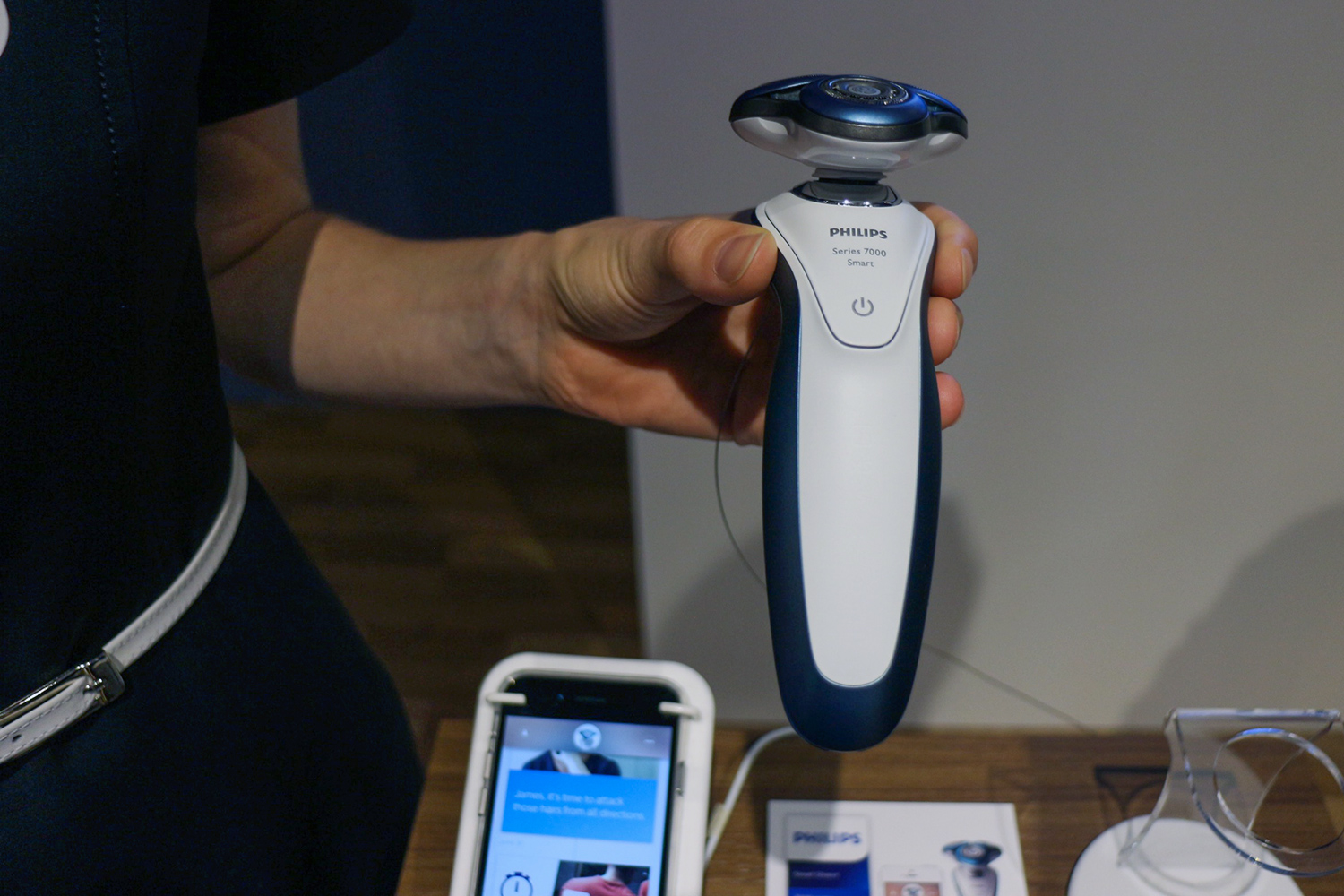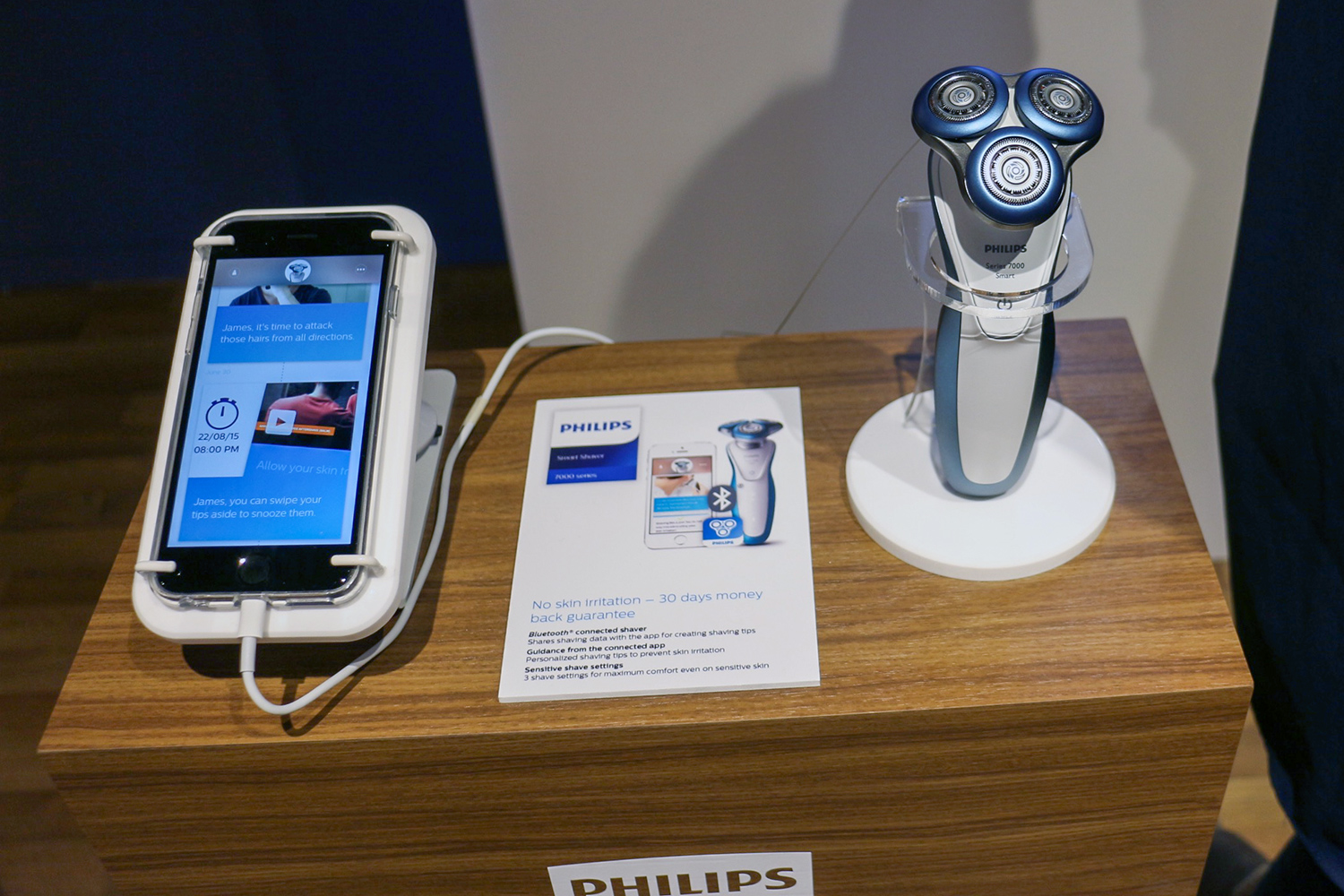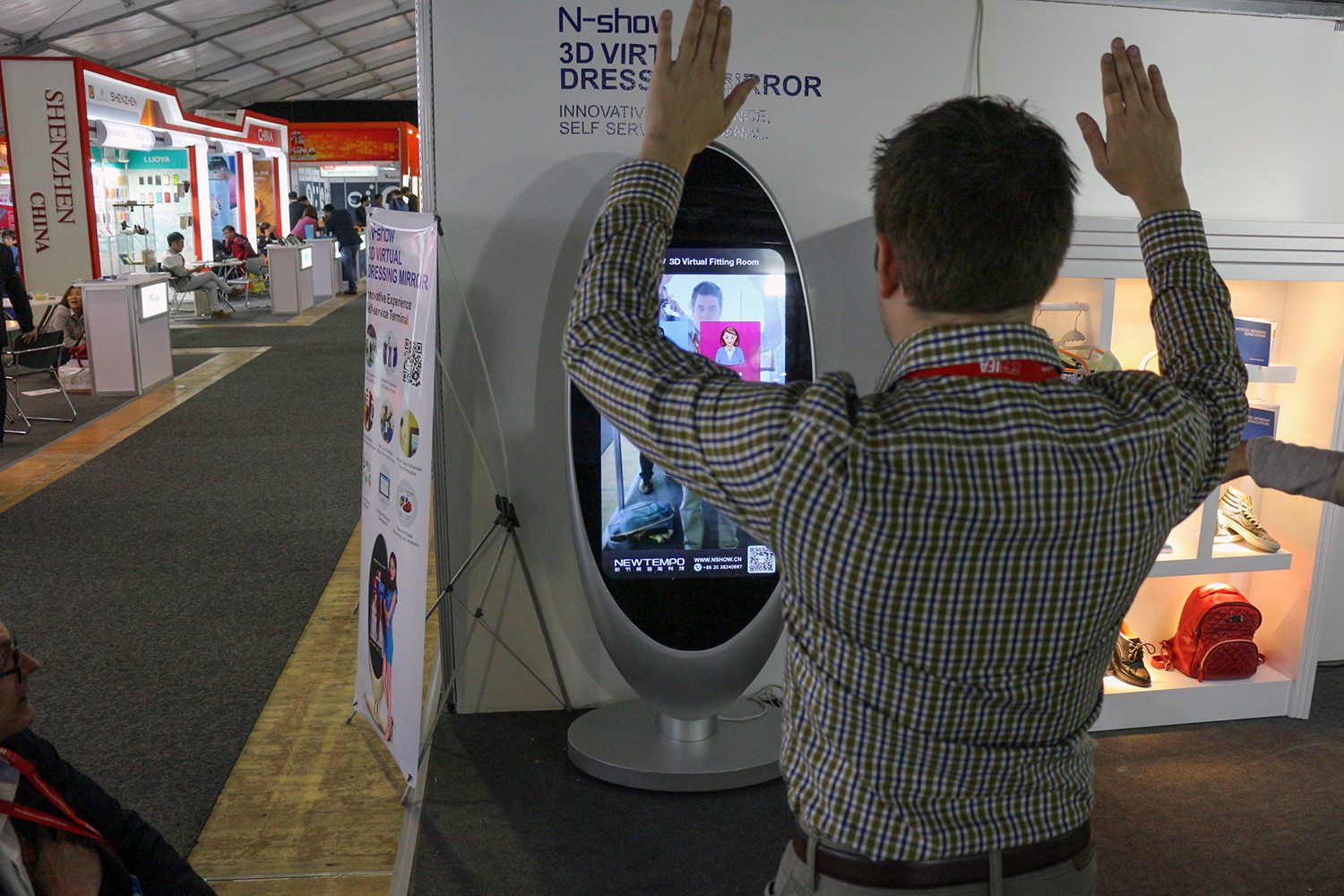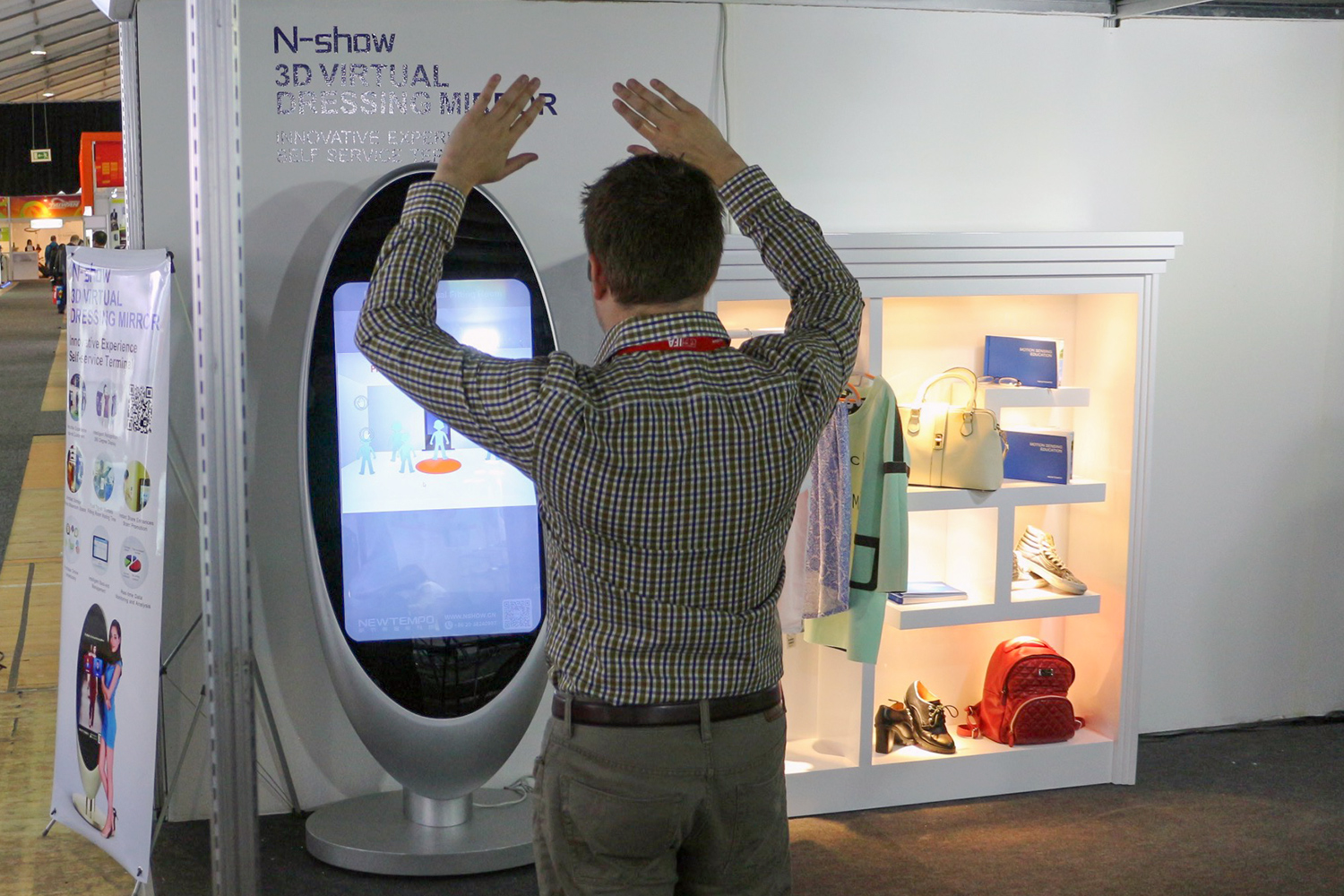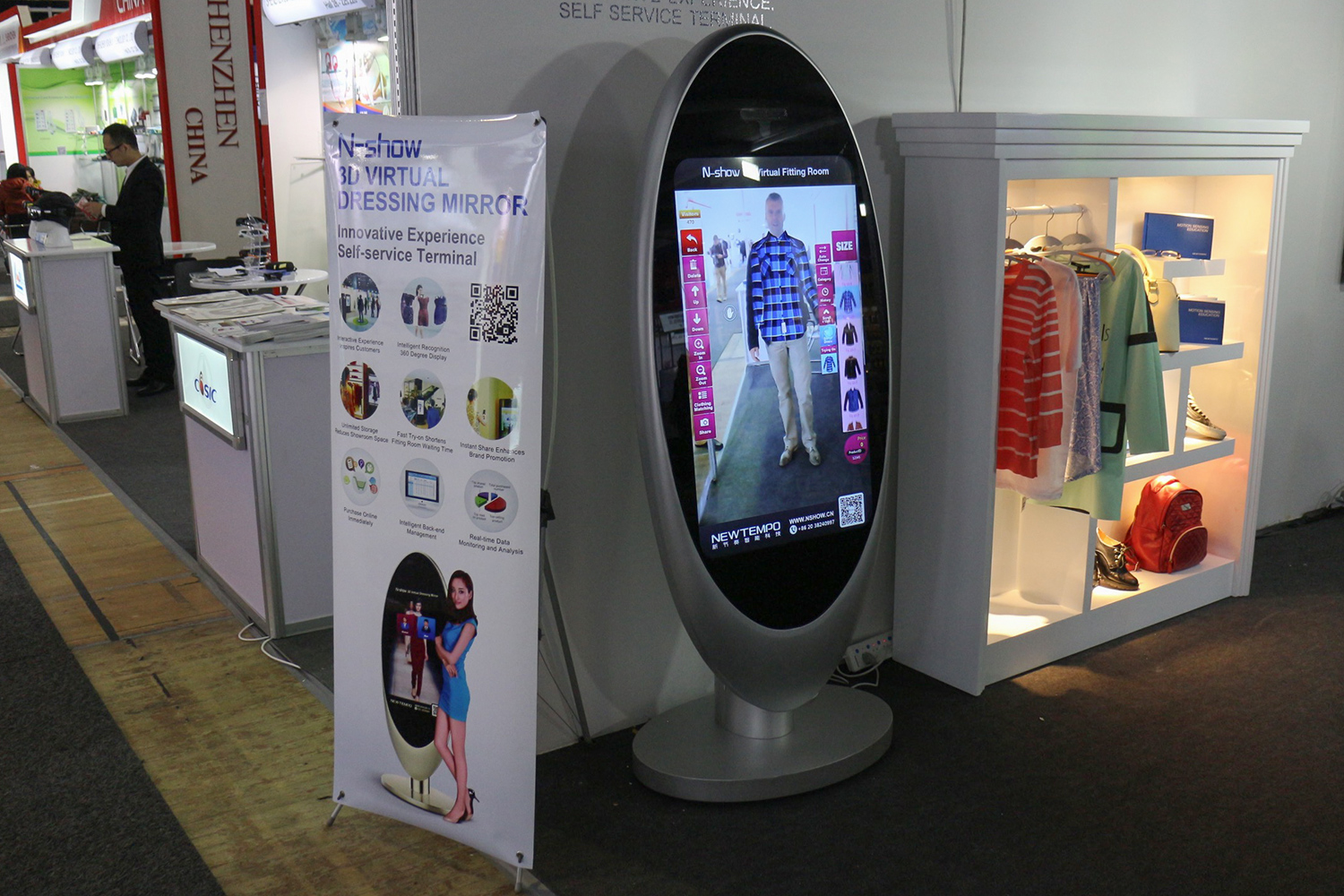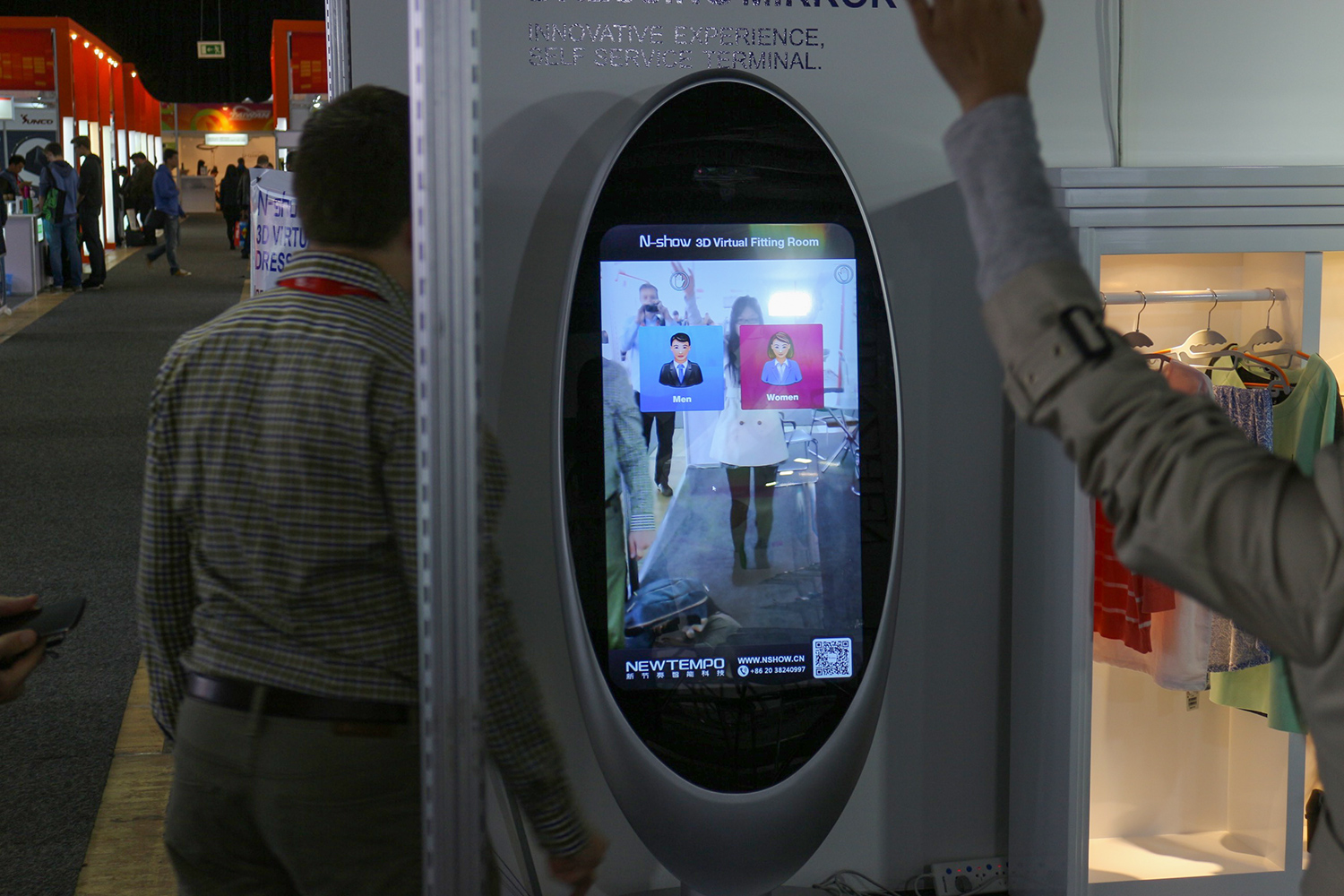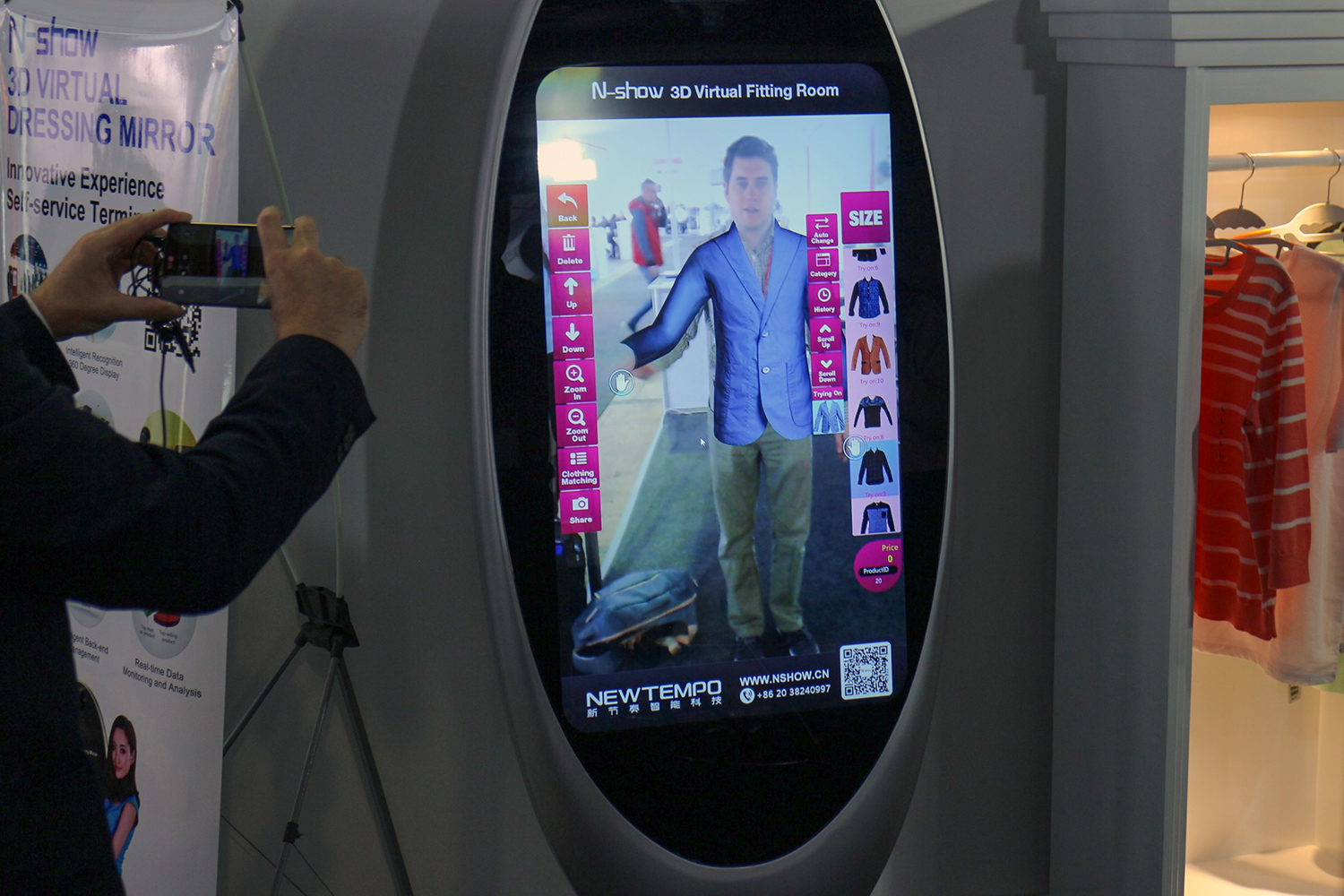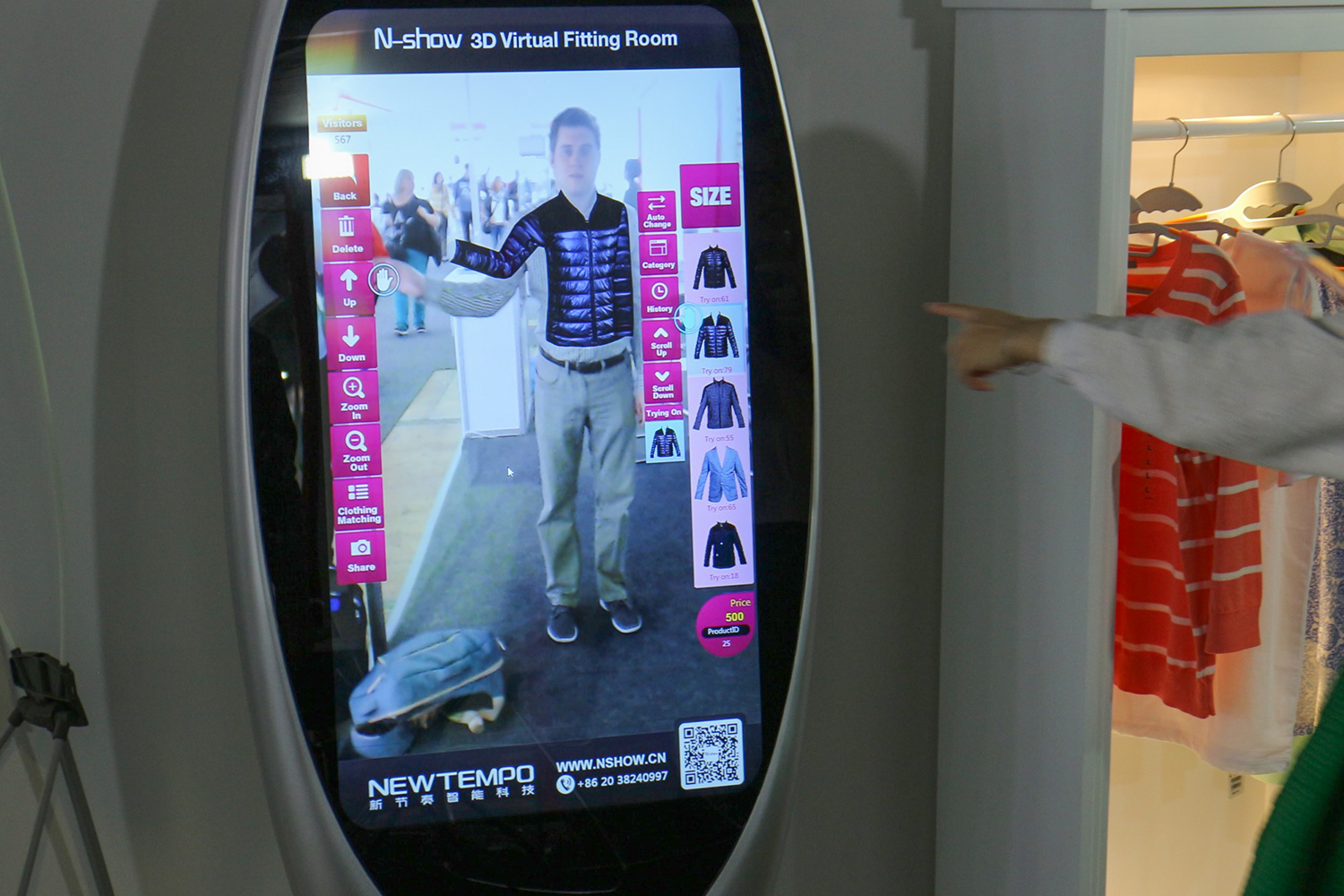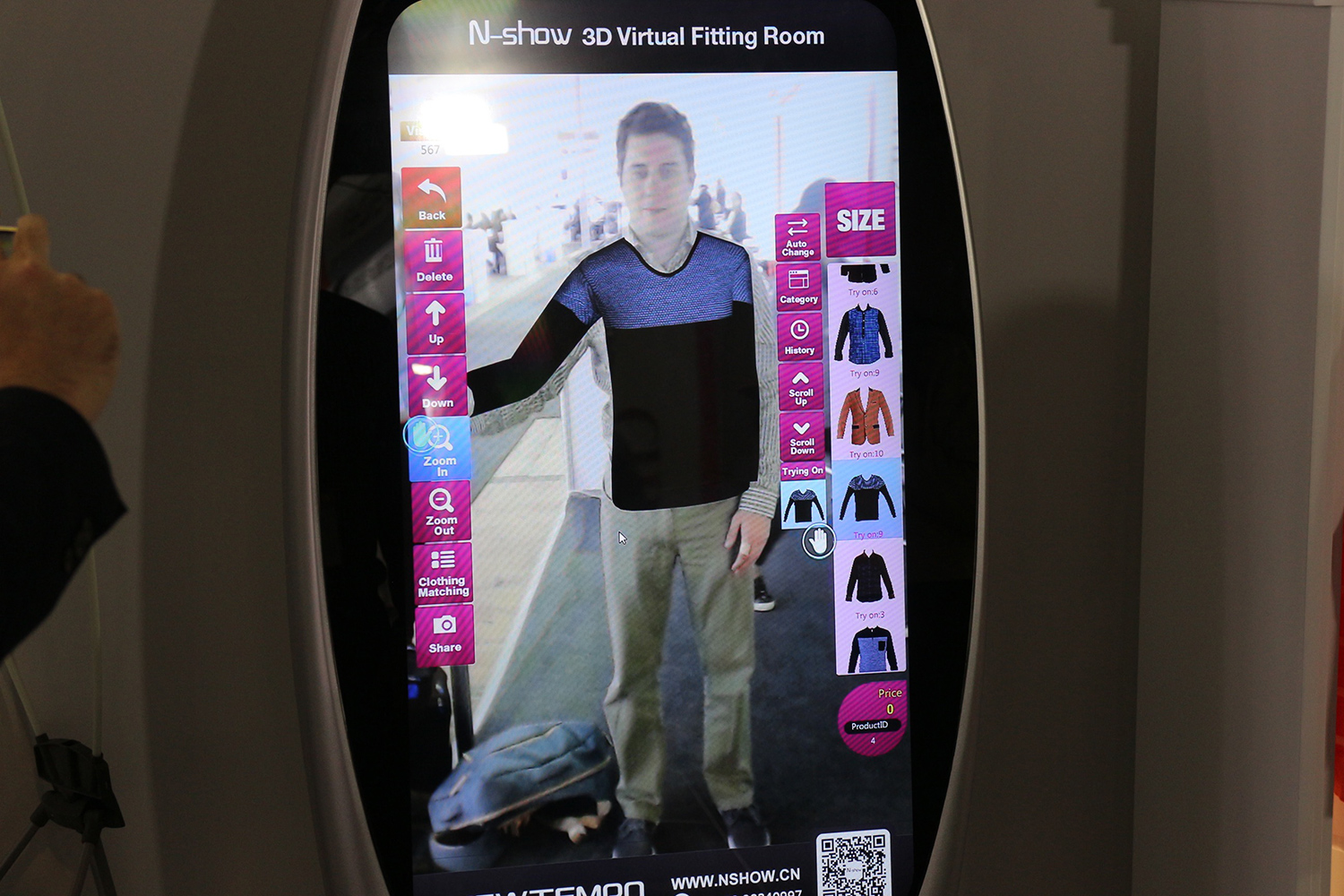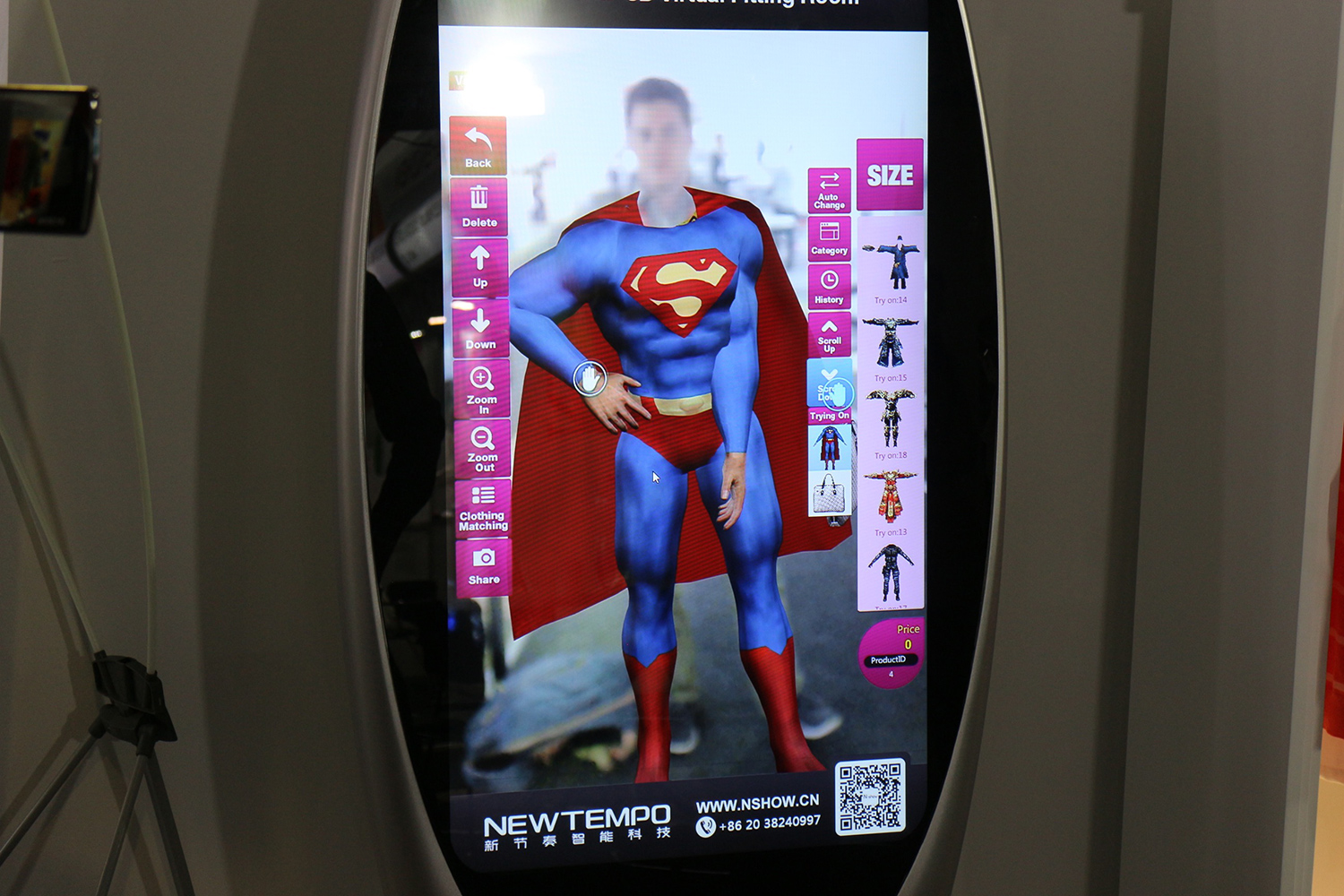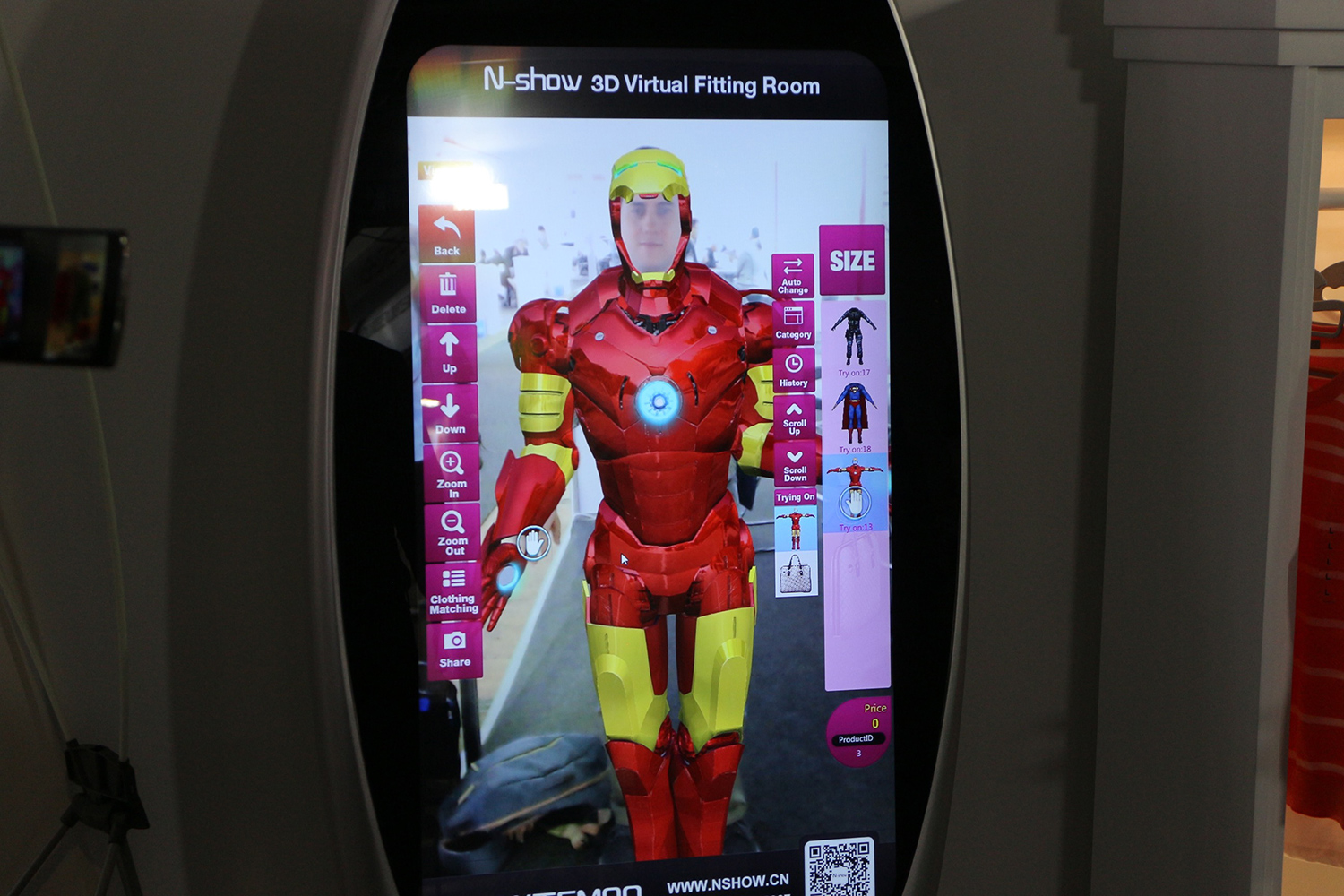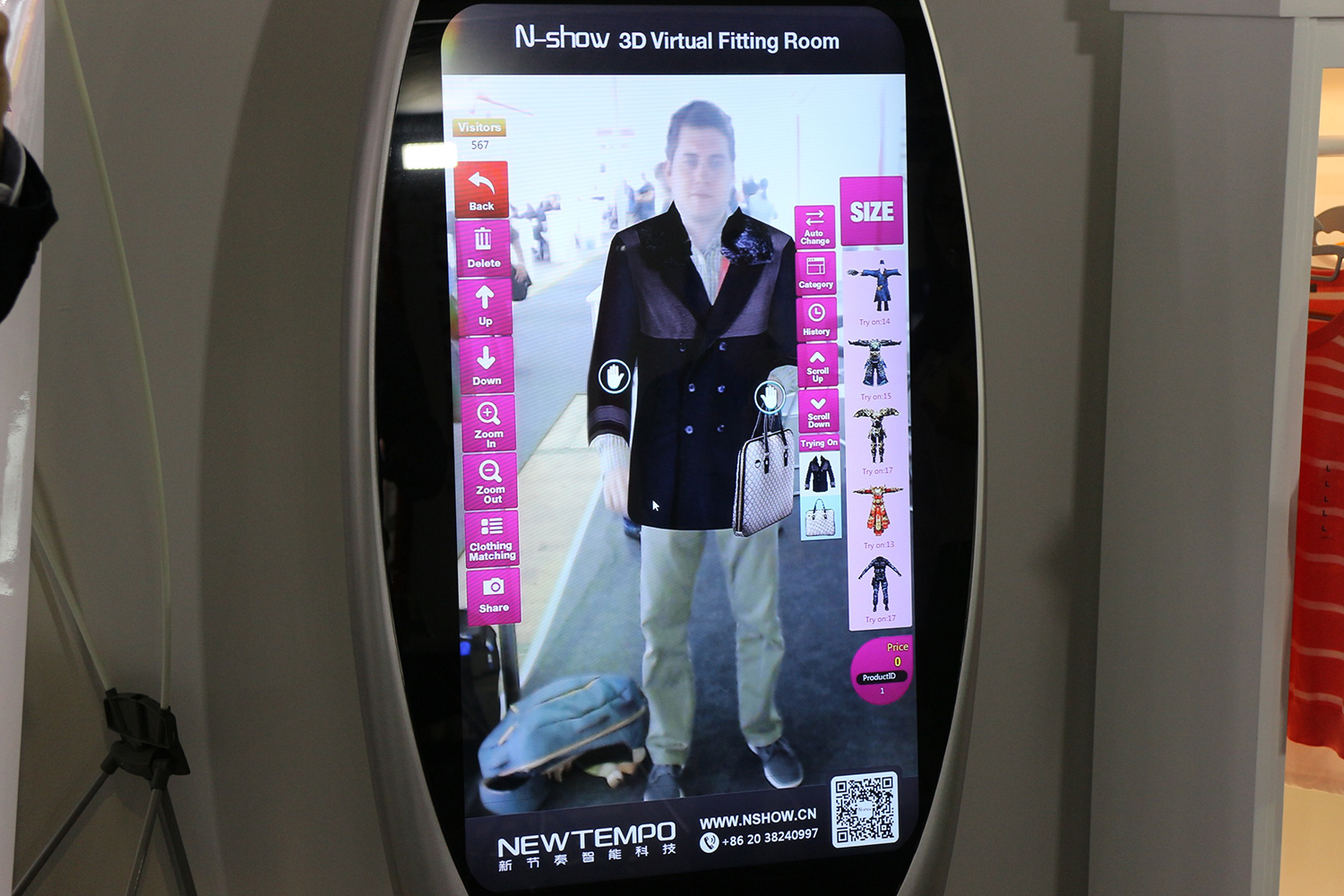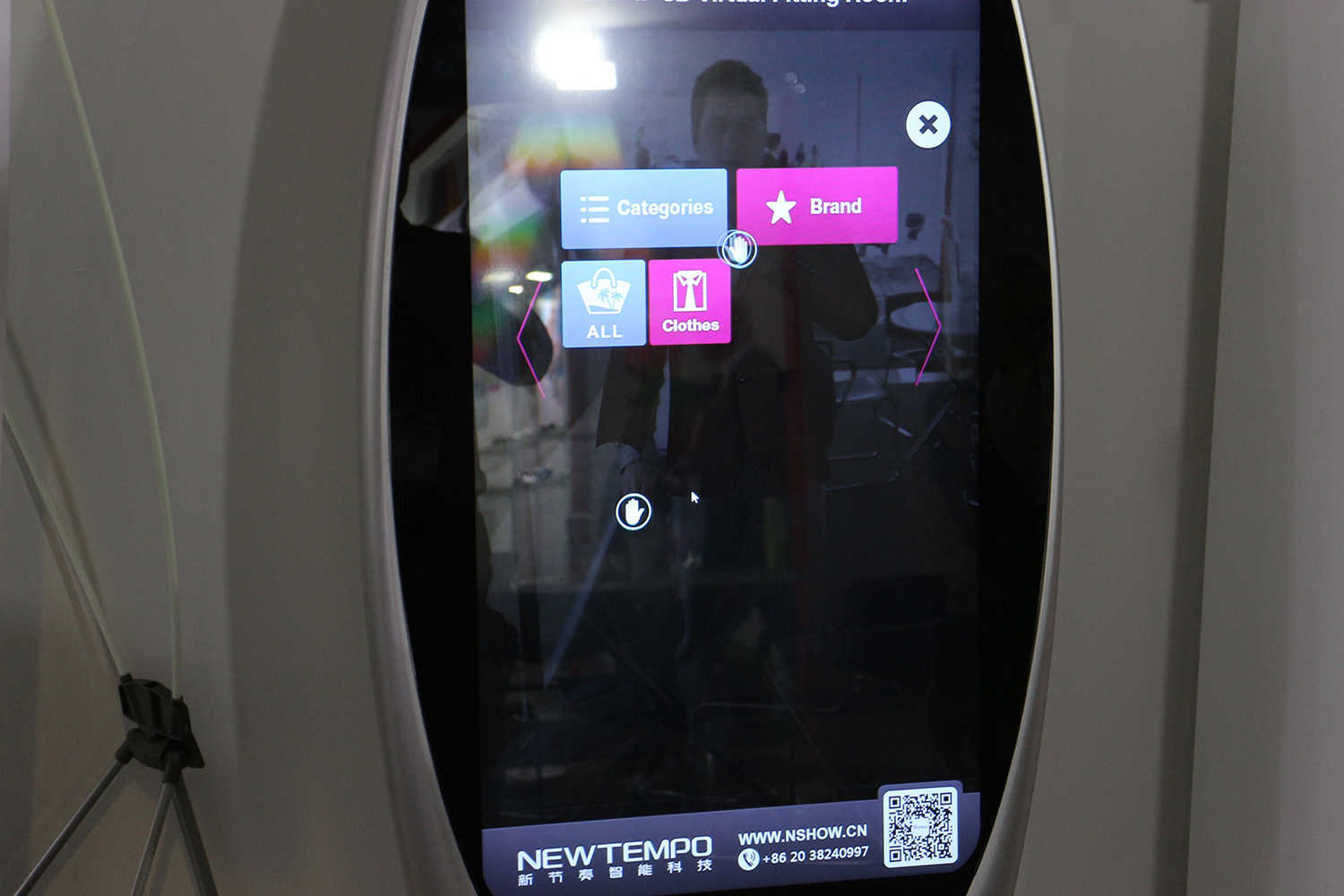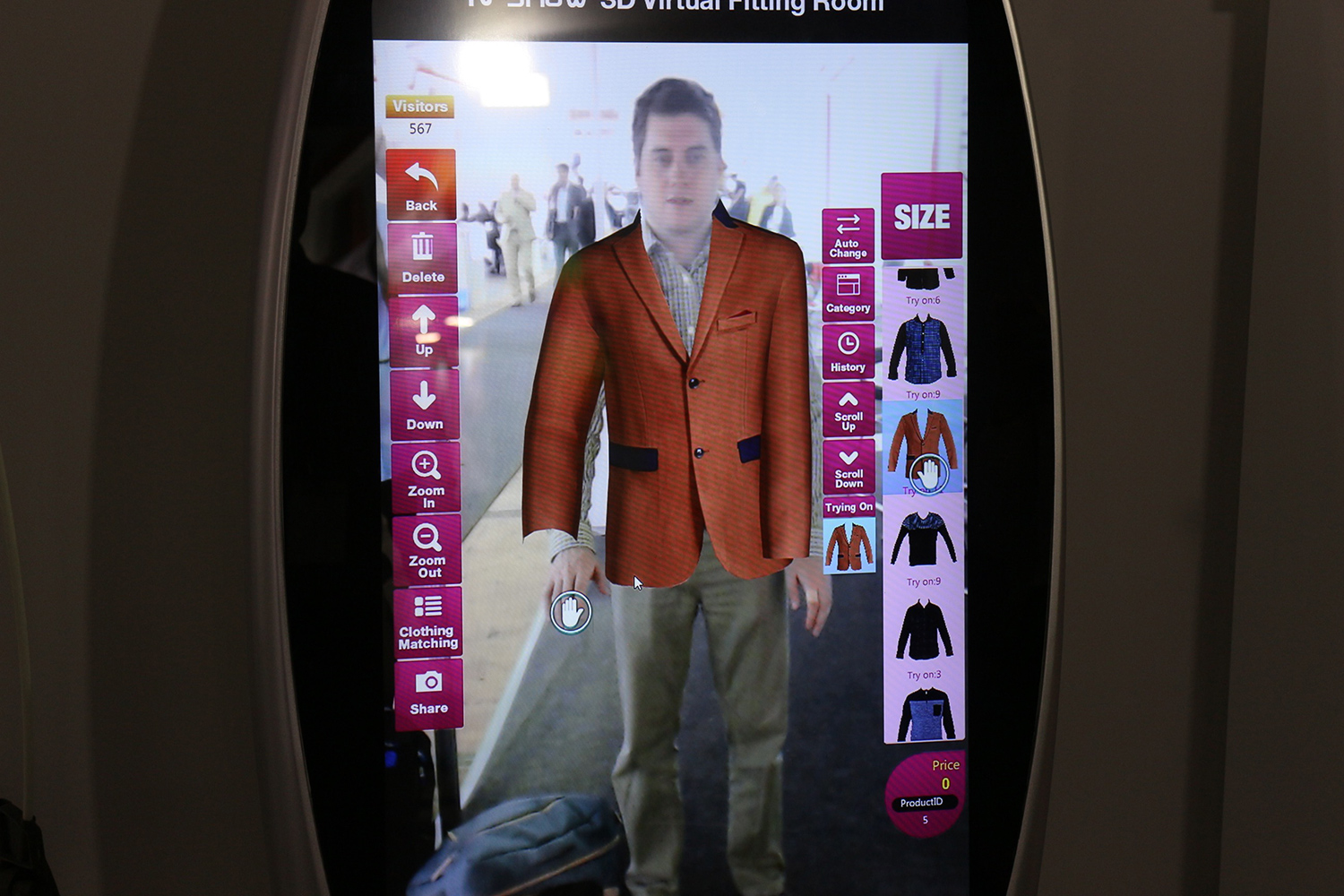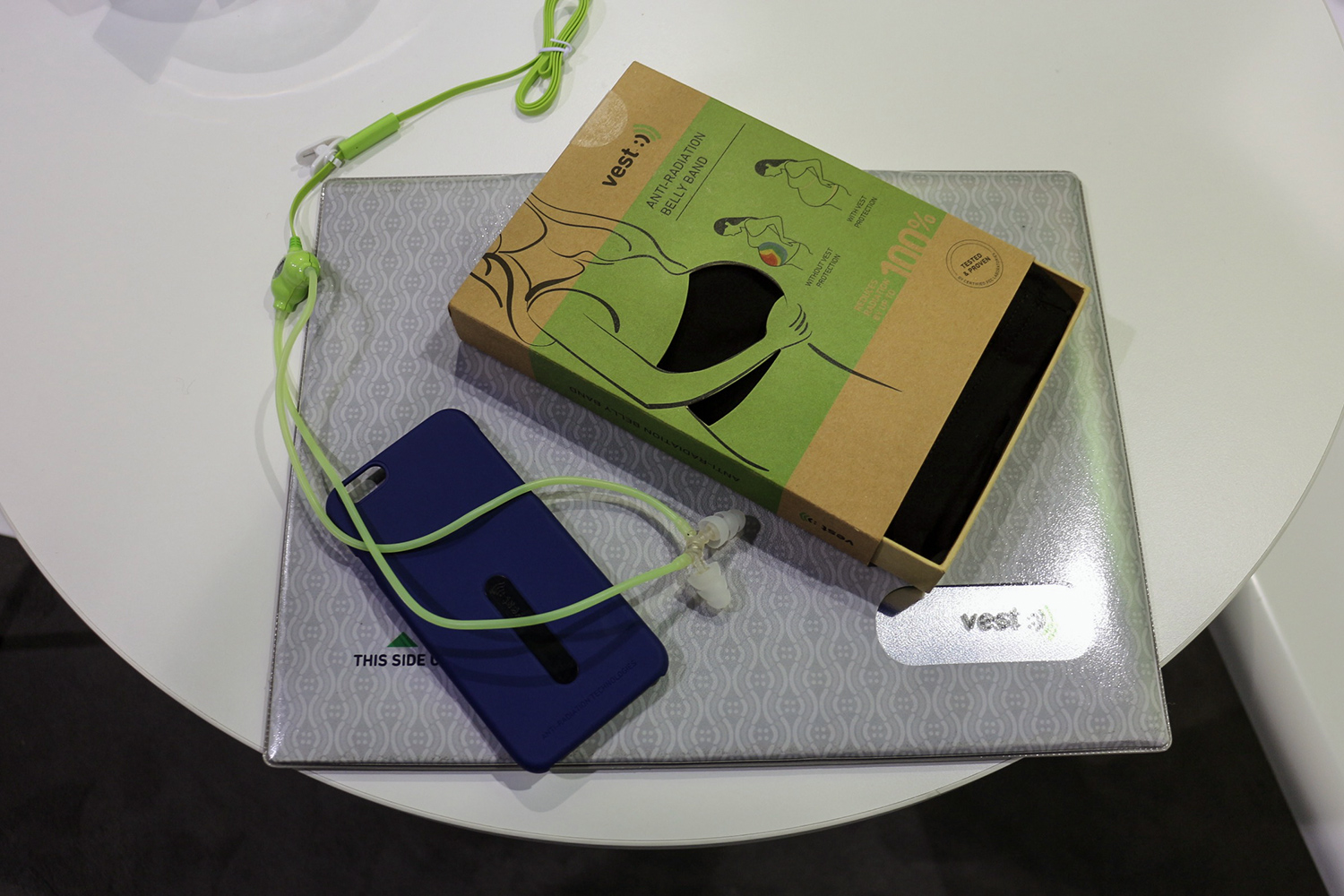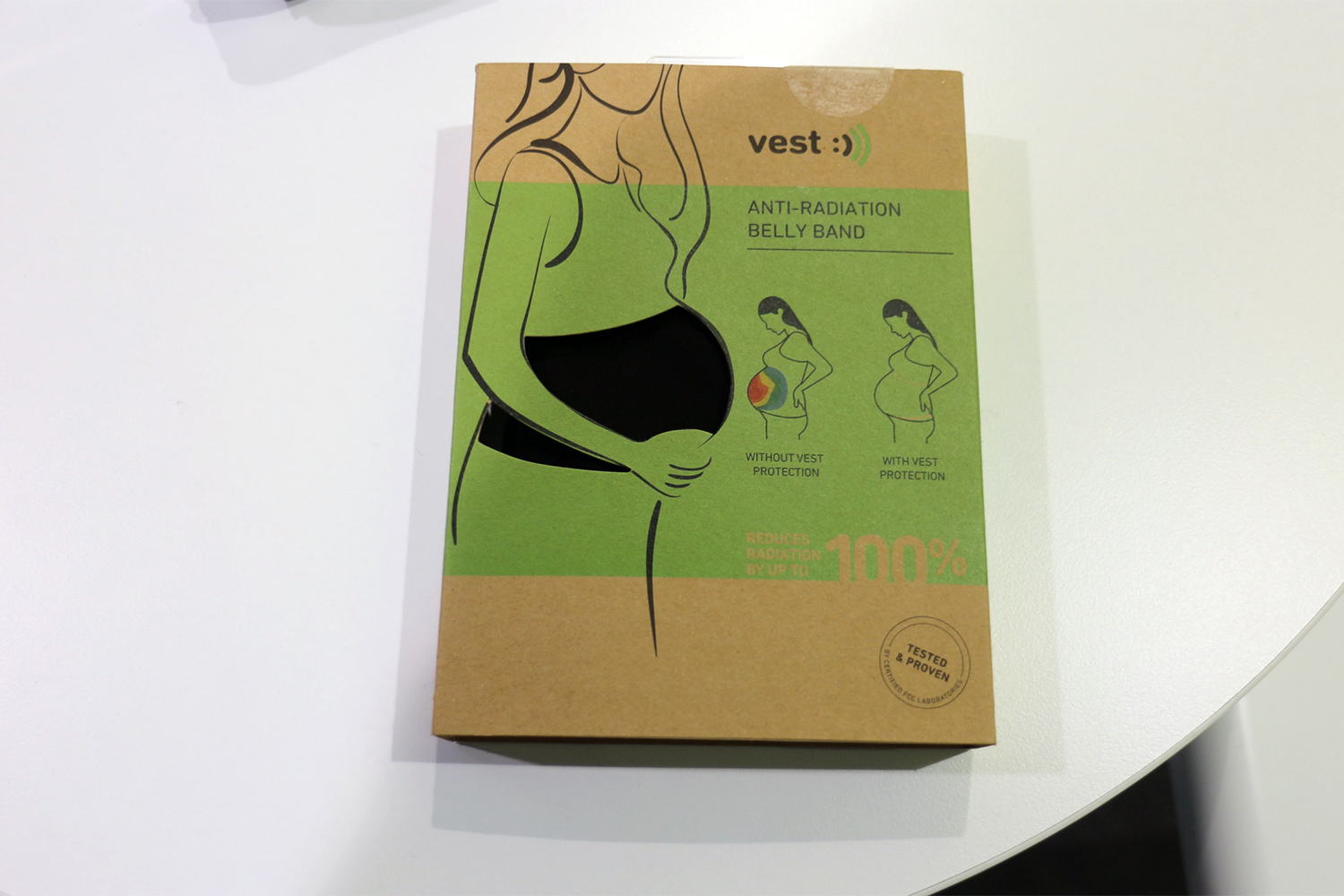
In the rush to create innovative new technology, common sense can sometimes be a casualty. Seeking out the weird and the wonderful at trade shows is one of the best things about covering tech, and our trips to shows like IFA in Berlin surfaced some oddities. The line between genius and insanity is not always clear. One man’s tech treasure is another’s garbage. So, are these gadgets offering fantastic solutions to real world problems, or are they over-engineered, over-expensive, and a little bit crazy? You decide.
Fittop Foot Massager
You can’t walk past something like Fittop’s foot massager without stopping to have a go, especially after pounding the floors of IFA 2015‘s labyrinth halls for several days. Instead of a regular electronic foot massager, where you would stick both feet into a single device, Fittop has developed a pair — one for each foot. The USP here, or Unique Selling Proposition, as the enthusiastic salesman informed me, is that you can walk around in them. The fact that they weigh 11lbs and look like giant robot clogs, might put you off doing this, but it is technically possible.
When you stick your foot in, the massager sizes it up, and then the massage begins. Each massage lasts 15 minutes, but the massager will automatically stop if you stand up. It was an uncomfortable experience during the demo, and when I removed my foot at the end, my calf muscle cramped. Fearing injury, I hobbled away from the booth, pursued by the salesman, but after a short walk my massaged left foot began to feel light and generally awesome, compared to my un-massaged, dully aching right foot. Is there any such thing as a bad foot massage? Apparently not. If you like the sound of this you can snap up a pair for around $330 — according to representatives.
Philips Smart Shaver Series 7000
Dragging shaving into the future, Philips’ new Bluetooth-connected Smart Shaver Series 7000 is easily the most advanced electric shaver I’ve ever seen. The aim is to deliver a truly personalized shaving experience. To that end, the shaver syncs with an iOS app and tracks your daily shaves. It measures how long you shave for every day, which spots you cover, and the resulting skin irritation. That data is used to offer you insights, so you can modify your shaving habits. Maybe you shave in the one spot for too long, or miss the same place everyday. Perhaps you need to alter the settings for your skin and hair type. The Smart Shaver can tell you.
The Smart Shaver also has an attachment for your pre-shave that makes the hairs stand up for easier cutting. If you’re not happy with the guidance it offers, Philips even has a kind of shaving concierge service, where experts can weigh in with advice on the perfect shave. We’re still waiting for pricing confirmation on this one, and someone to tell us this isn’t completely over the top…
3D Virtual Fitting Room
This device, manufactured by New Tempo, is really aimed at clothing stores. It’s a large screen combined with a 3D motion sensing camera and some clever software that allows you to try on new clothes virtually. You stand in front of it, and stick your hands out to select different items. You can also enlarge or shrink them to make them match your profile. Each item is then superimposed on you, with 3D-modeling software, to give you an idea of what it might look like if you were to try it on. It basically drapes a 3D model over you which is connected at specific points round the neck and on the arms and legs.
It’s no substitute for a genuine fitting, and is incredibly slow and buggy, but it would be fair to say it gives you a rough approximation. Mostly, it is a lot of fun. Our Deputy Editor, Jeff, spent a good 15 minutes gleefully trying on every outfit he could find and had to be dragged away in the end. The unit we tried also had some easter eggs, like the ability to try on super hero outfits and other cosplay clothing.
Vest Anti-Radiation Protection for pregnancy
There’s still some controversy about how harmful the radiation we are exposed to on a daily basis actually is for our bodies. Vest offers a line of products that claims to protect you from radiation by reducing your exposure. It offers phone cases, which it claims reduce exposure by 50 percent by redirecting radiation away from the head. It also offers wired and Bluetooth headsets with earbuds, which have speakers down in the main control unit and run pipes up your ears, so the electronics aren’t near your head. More straightforward are the microwave and laptop shields, which are just rectangular shields that block radiation.
One of its newest products is a radiation-blocking material which is designed to slip over a pregnant belly and safeguard the unborn baby inside. When my cell phone was wrapped in the material it did completely block the signal, so it’s clearly preventing some signals and radiation from passing through, but whether that will actually be of any benefit to your child is unclear. The trouble with products like this is that there’s no way to prove they’re really helping you at all.
Haier Duo Washer

There were a lot of different washing machines on show at IFA this year. Samsung’s AddWash grabbed the lion’s share of the headlines, allowing you to add forgotten washing into the cycle without having to stop it and wait for it to drain. But Haier had easily the strangest-looking washing machine at the show. The Haier Duo Washer is a double-decker washing machine, with a large drum at the bottom and a smaller one above it. That means you can do two separate loads at once. As if that wasn’t enough, this washer also sports a 7-inch LCD and Wi-Fi connectivity.
LG kind of did this before, though they hid the smaller washer in a pull-out drawer. The Duo Washer is unsurprisingly huge and it’s going to cost 1,600 euros ($1,800) when it launches in Germany in 2016. There’s no word on whether it will land Stateside.
We’ve reached the end of our crazy or genius gadgets list. Let us know what you think in the comments below.
